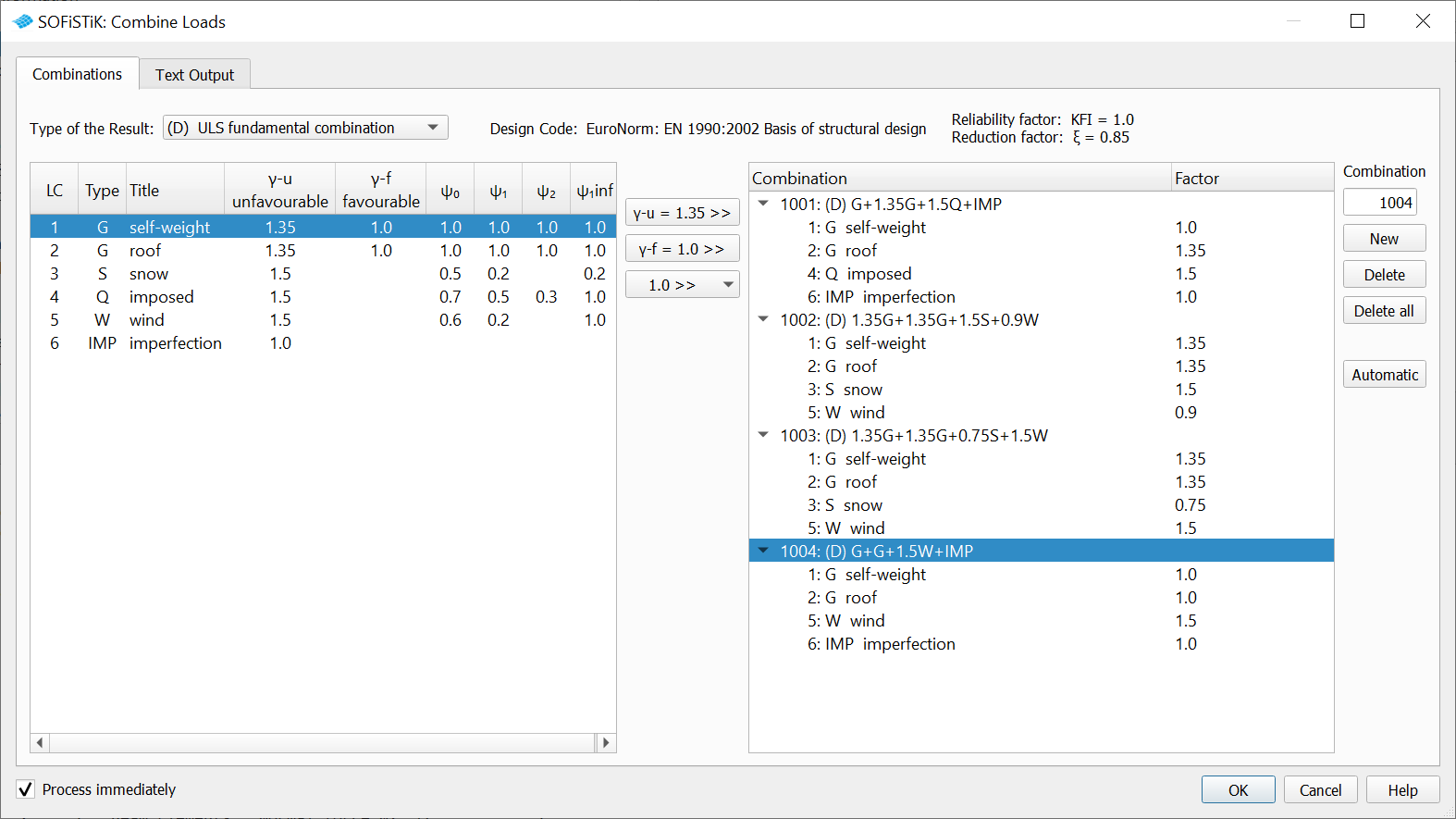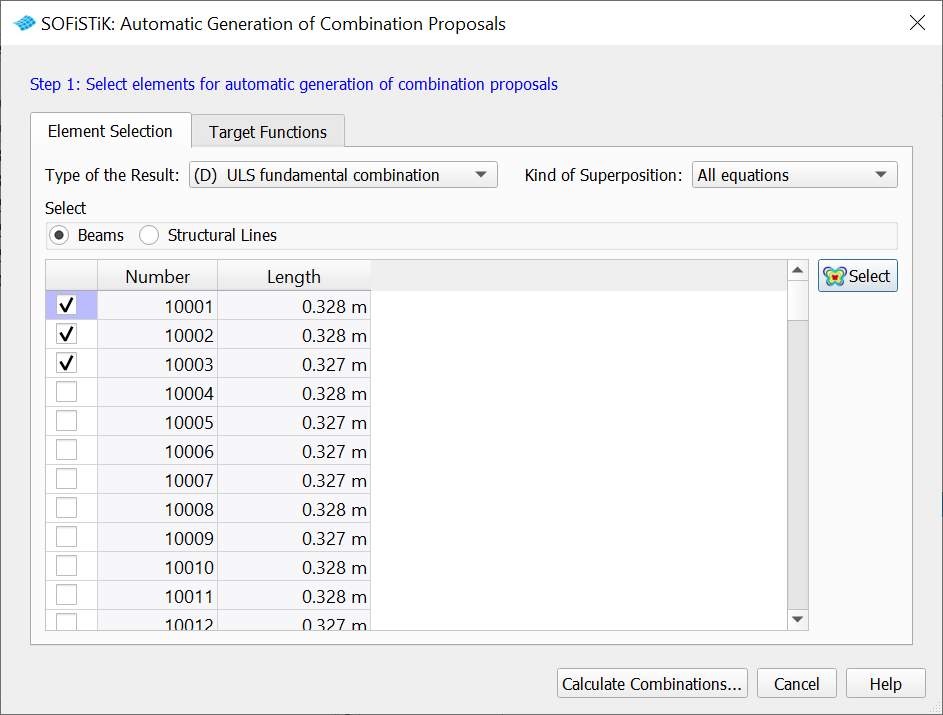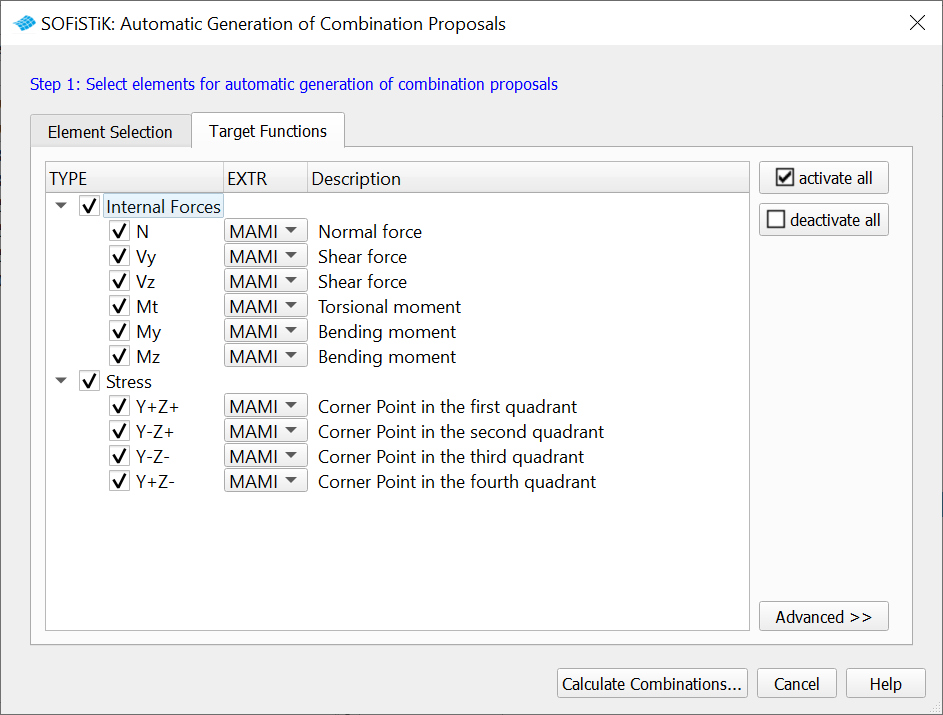Combine Loads¶
With the help of the SSD task ‘’Combine loads’’,
the required load combinations are collected together for different design tasks.
The individual load combinations are assigned to different design tasks via the ‘’Type of results’’.
Tab Combinations¶

For standards whose partial safety factors are defined (e.g. Eurocodes), these are displayed in the dialog and can be selected directly for combining.
Load combinations can also be created with completely freely specified factors. This way, load combinations are assigned to the loadcases, which can be calculated and subsequently processed in the design tasks. Furthermore, these load combinations are the basis for all non-linear calculations.
Button Automatic¶
With the Automatic button, the “Automatic Generation of Combination Proposals” dialog opens with two tabs. Here the required load combinations can be generated automatically for beam elements. This feature is available for all Eurocodes, for building construction.
Element Selection:
After specifying the type of results and, if necessary, the type of superposition and the selection of beams or structure lines, possible combinations for a design task are suggested with the Calculate Combinations… button.

Target Functions:
In addition to the known superpositioning criteria, the minimum and maximum internal forces, the target functions tab also offers additional stresses at the cross-sectional level for superpositioning.

Especially in case of bending with normal force or biaxial bending, the combinations for the decisive stresses of the component are found correctly.
Since there are usually no stress points defined in the cross-section, the program forms an enveloping square around the cross-section and defines a controllable number of stress points on the diagonal.
At the points defined in this way, the max./min. stresses are formed. The associated load case combinations are saved and saved for transfer to the Combinations tab.
The approach was developed for reinforced concrete columns and has proven itself there.
The points inside the cross-section are especially necessary for the calculation according to the second order theory, since load combinations with a high normal forces are often decisive here. The method can also be used for steel cross sections.
Hint
Furthermore, the max./min. internal forces N, M, V, … are examined. However, this is particularly not recommended for biaxial bending.
Internal procedure¶
First, the “duplicates” combinations are filtered out. Here a counter runs. The combinations found will be sorted by frequency so that the combination with the largest counter is at the top. A combination statistic is provided for information displayed. For each combination, the number of how many times it has been found will be shown. The title of the combination indicates how the combinations are composed (e.g. ‘’1.35G + 1.5Q’’).
Imperfections¶
If one or more imperfection load cases exist, then you can use include them into the combination. The selected imperfection load cases are added to the combinations. The selected combinations are accepted with the Apply button.


